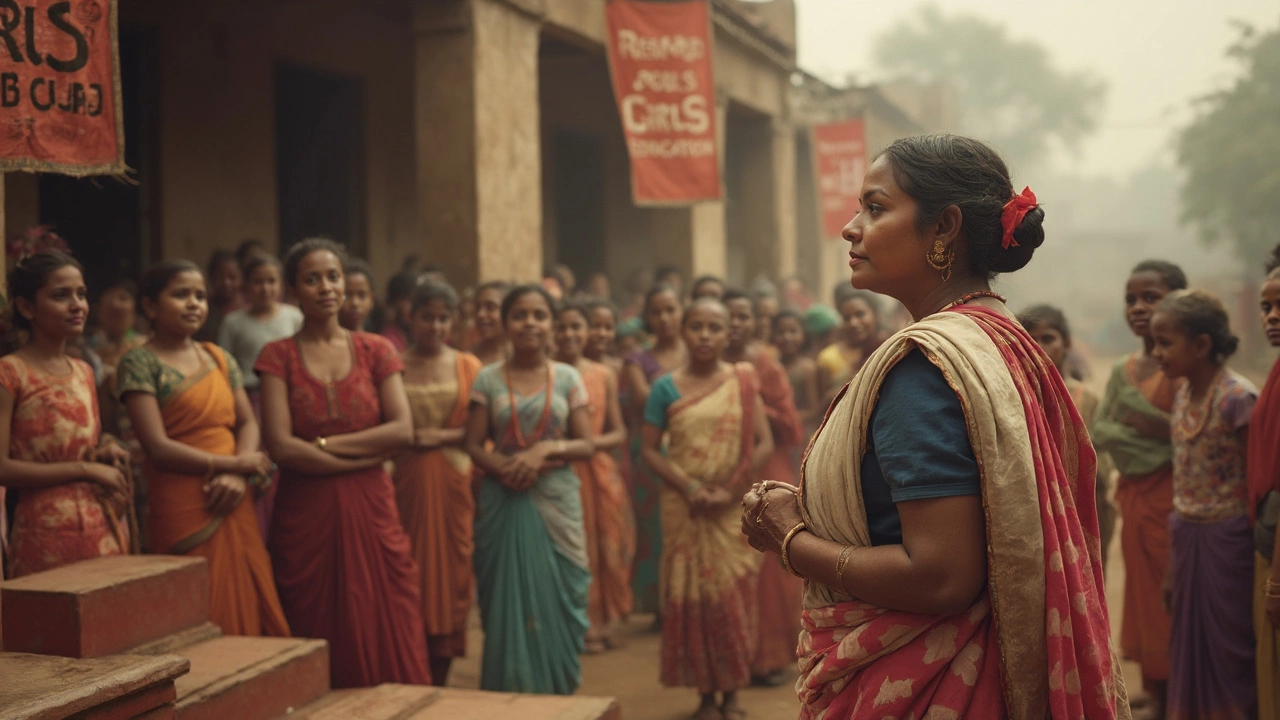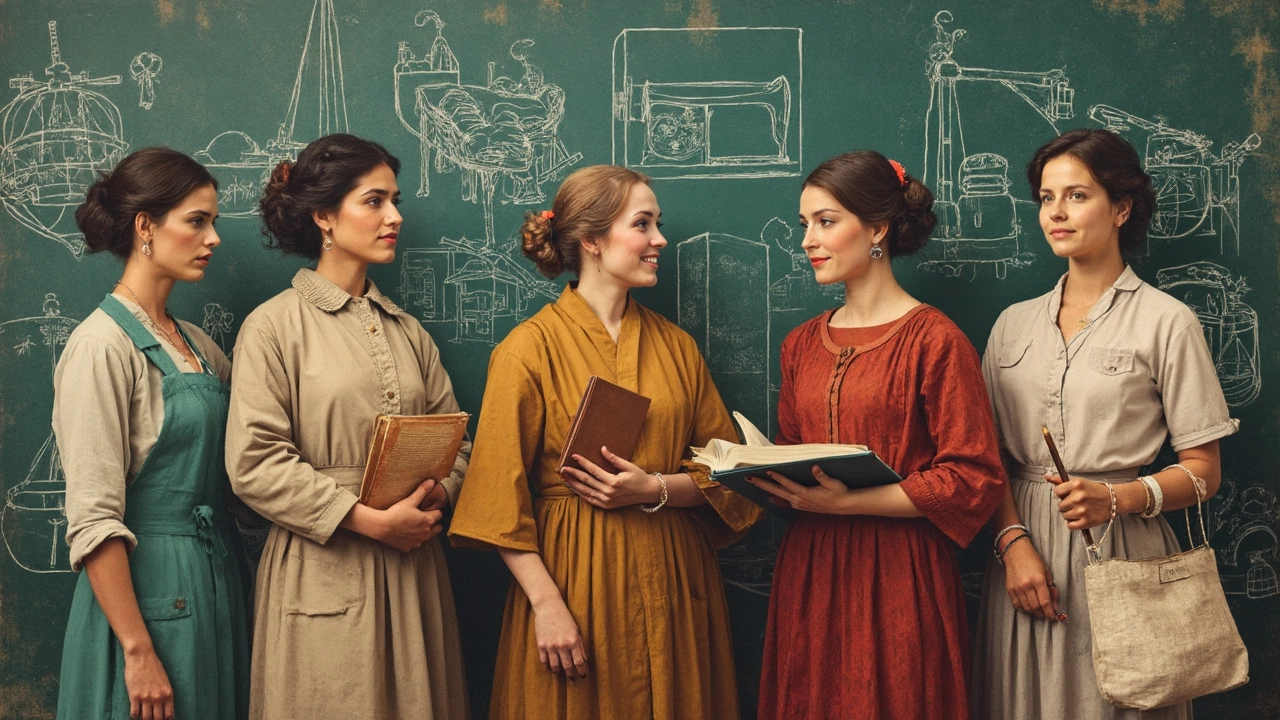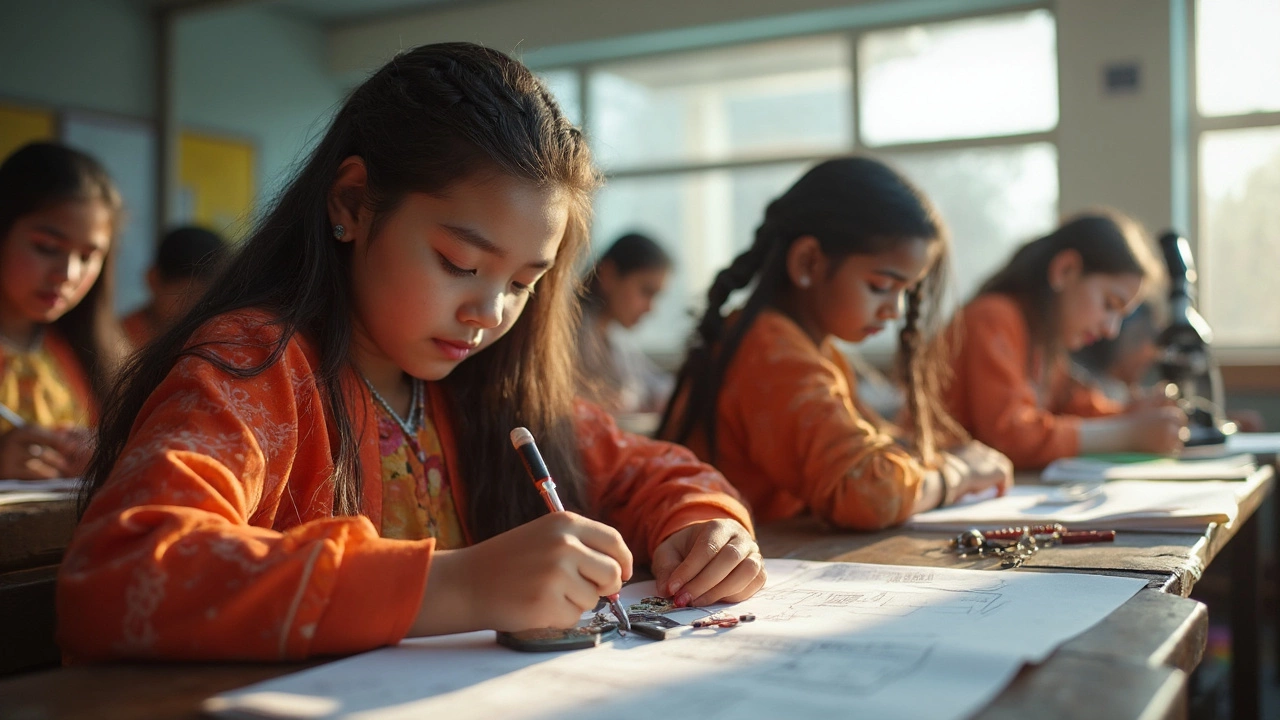
Ever wonder who actually stuck their neck out so women could go to school? This wasn't a one-person job. Hundreds of years back, girls were told school wasn't for them—just basic reading, if they were lucky. But some folks couldn't stand that idea. They stood up, and things started to shift.
If you think vocational education only popped up recently, think again. The first moves started when a few women, and a handful of men, started asking why girls couldn't learn the same things as boys. It wasn’t just about reading and writing. They wanted girls to pick up hands-on skills too—stuff that could land them a job, not just a seat in the kitchen. Today, thanks to their ideas, women have more choices than ever.
And here's the thing—these changes didn't just happen in places like the US or Europe. Around the world, people risked their reputations (and sometimes their freedom) to get girls into classrooms and workshops. Want to know who really started this push, and why their work is still paying off? Keep reading—there's more to this story than you might think.
- Early Pioneers Who Fought for Women's Schooling
- Key Advocates That Changed the Game
- Vocational Training: More Than Just Books
- How These Efforts Shaped Women's Opportunities
- Tips: Supporting Women's Education Today
Early Pioneers Who Fought for Women's Schooling
Let’s talk about the folks who first put women education on the map. These early trailblazers didn’t exactly have cheering crowds; most of them faced serious pushback, but they didn’t stop fighting for change.
Take Mary Wollstonecraft in England, back in the late 1700s. She wrote “A Vindication of the Rights of Woman” and called out the fact that girls were basically left out of real school. Her ideas made a bunch of people uncomfortable, but they opened up big conversations about women’s rights everywhere.
Over in India, Savitribai Phule started the first school for girls in 1848—when “girls at school” was almost unheard of. She and her husband, Jyotirao, were even pelted with dirt for their trouble. Still, she taught girls from all classes and castes. Her push for women education wasn’t just about math or reading; it was about giving every girl hope and options.
The U.S. saw Catharine Beecher, who pushed for schools dedicated to women in the 1800s. She believed women could become strong teachers and shape the future, so she helped set up teacher training programs just for them.
- Mary Lyon opened Mount Holyoke Female Seminary, which grew into a leading women’s college.
- Emma Willard championed science and math for girls, going way beyond ‘just sewing and manners’ classes.
If you’d like some numbers, check this out:
| Year | Pioneer | Country | First/Impact |
|---|---|---|---|
| 1792 | Mary Wollstonecraft | England | Wrote the first big book demanding women’s access to school |
| 1848 | Savitribai Phule | India | Opened the first girls’ school, taught across castes |
| 1837 | Mary Lyon | USA | Started first higher education institution for women |
The push for women’s schooling was about more than just learning facts. These pioneers pushed for a shot at a better life—skilled jobs, real choices, and a break from old-school rules. If you’ve ever wondered why girls in most places can dream of being engineers, doctors, or teachers, thank these gutsy game-changers.
Key Advocates That Changed the Game
If you dig into the history of women education, a few names always pop up. These folks didn’t just talk; they actually made things happen for girls and women to get real schooling, especially in vocational training. Let’s break down who they were and what they did.
In India, Savitribai Phule and her husband Jyotirao Phule opened the very first girls’ school in 1848. Imagine this: people threw cow dung at her for teaching girls, but she just kept going. That school taught practical skills too, not just letters and numbers. Way over in the US, Mary Lyon set up Mount Holyoke Female Seminary in 1837, focusing on science and hands-on work, not just fancy manners. She believed in training women for real jobs, not just making them good wives.
Don’t forget Malala Yousafzai—yes, the Nobel Peace Prize winner. Even after being attacked, she spoke out about why girls everywhere, especially in tough situations, should learn skills to build their futures. And in Nigeria, Dr. Obiageli Ezekwesili brought in new ideas for women's job training and pushed for policies that open doors to vocational training for women.
Here’s a quick look at the effect of these advocates:
| Name | Location | Main Contribution |
|---|---|---|
| Savitribai Phule | India | Launched India’s first girls’ school, focused on both literacy and trades |
| Mary Lyon | USA | Founded the first college for women, with strong vocational training |
| Malala Yousafzai | Pakistan | Fought globally for girls' right to education, including marketable skills |
| Obiageli Ezekwesili | Nigeria | Drove government reforms to improve women’s access to vocational education |
Want to see results? According to UNESCO, countries that followed these advocates saw a 40% jump in women joining skilled jobs compared to places where girls barely make it through school. So next time you hear someone say girls ‘don’t need’ training—remember, these advocates changed that story for good.

Vocational Training: More Than Just Books
When we talk about vocational training for women, it's not just about hitting the books. It's about learning stuff you can use right away—skills that pay the bills and open doors. Back in the day, girls were steered toward classes like sewing or cooking. That’s changed. Today, women pick up all kinds of technical and hands-on skills—think coding, car repair, plumbing, nursing, design, you name it.
Here's a wild fact: by 2023, UNESCO found that in countries like Nigeria and India, nearly 55% of women who completed vocational training found a job within six months. That jumps to about 65% if they trained in high-demand fields like IT or healthcare.
| Country | Women in Vocational Training (%) | Job Placement After Graduation (%) |
|---|---|---|
| Nigeria | 38 | 53 |
| India | 44 | 55 |
| Germany | 41 | 72 |
| USA | 57 | 69 |
It’s not only about getting a job, either. Women with vocational training have more say in what kind of work they do, and even start their own businesses. This freedom wasn’t possible when women were boxed into just a couple of roles.
Here’s how modern vocational education goes beyond old-school lessons:
- It mixes classroom learning with real-world practice—like internships or apprenticeships.
- Women get to train in growing fields like medical tech or digital marketing, not just traditional jobs.
- Lots of programs team up with companies, so students know their skills match real job needs.
The takeaway? Women's vocational training is practical, flexible, and packed with options. It's not about memorizing textbooks—it's about building muscle memory, real experience, and confidence.
How These Efforts Shaped Women's Opportunities
All those people who stood up for women's education didn’t just make a dent in the system—they flipped it on its head. Once the doors to schools and skills training opened, women grabbed a shot at real independence. Think about it: before girls could access women education, career options were almost zero. Afterward, the whole game changed. Suddenly, women could work as teachers, nurses, engineers, and even business owners.
Let’s look at some real impact. In the United States, the number of women in the workforce skyrocketed after World War II, when vocational programs accepted more women. By the 1970s, the number of women earning trade certificates jumped by over 70%. That wasn’t just luck—that was the result of decades of fights for women's rights and vocational training opportunities.
| Year | % Women in Workforce (US) |
|---|---|
| 1940 | 27% |
| 1970 | 43% |
| 2020 | 57% |
The same pattern played out all over the globe. In India, for example, programs like the Industrial Training Institutes started letting in young women in the 1950s, which led to more women running small businesses or landing steady jobs. In Nigeria, women in vocational schools became tailors, mechanics, even IT specialists—roles that used to be off-limits.
Mental shifts happened, too. Once girls saw women teaching or working as electricians, they knew it was possible. Schools and skill centers became places where stereotypes started to crumble. This social change mattered just as much as the paychecks and job titles.
Nowadays, every bit of progress—whether it’s flexible work hours, maternity leave, or more women going into science and engineering—can be traced back to those first few voices demanding real school advocacy for girls. So if you think your career path looks different than your grandmother’s, you can thank the long, tough fight for history of education for women.

Tips: Supporting Women's Education Today
It’s not hard to feel like you can’t make a difference for women's education, but every bit counts. Whether you know someone thinking about school, or you just care about helping more women learn job skills, you’ve got options.
- Mentoring Works: Studies from organizations like Girls Who Code show that when women in vocational training have mentors, they’re way more likely to finish their programs and land good jobs. If you have a skill or experience, offer to guide or even just encourage someone starting out—your advice is more valuable than you think.
- Money Still Speaks: Fees, books, and even travel make schools hard to afford. In India, the National Sample Survey Office (NSSO) found that financial barriers were the main reason young women dropped out of vocational courses. If you can, donate to scholarships or local groups paying for women's school costs.
- Challenge Old Attitudes: Social pressure keeps girls from certain courses. Be the one to call out old-school thinking—whether it’s in your family or workplace. Talking about success stories of women in skilled jobs helps shake these beliefs.
- Support Organizations That Deliver: Big names like Malala Fund and Women’s Global Education Project directly back girls’ and women's education. But local non-profits often work on the ground and need just as much help. Check their websites for ways to get involved.
- Push for Policy Changes: If you’re up for it, join or support campaigns demanding more government funding for women's vocational training. Some countries now spend up to 5% more on female-targeted skills programs compared to five years ago. Public support makes a real difference.
| Country | Women Enrolled in Vocational Training (2023) | Programs with Female Mentors (%) |
|---|---|---|
| India | 5.8 million | 34% |
| USA | 2.2 million | 60% |
| Kenya | 420,000 | 25% |
Simple actions go further than you think—whether that means sharing info, volunteering, or just being a voice that backs women going to school. It’s never just history; it’s today’s push for real women's rights at school and at work.
